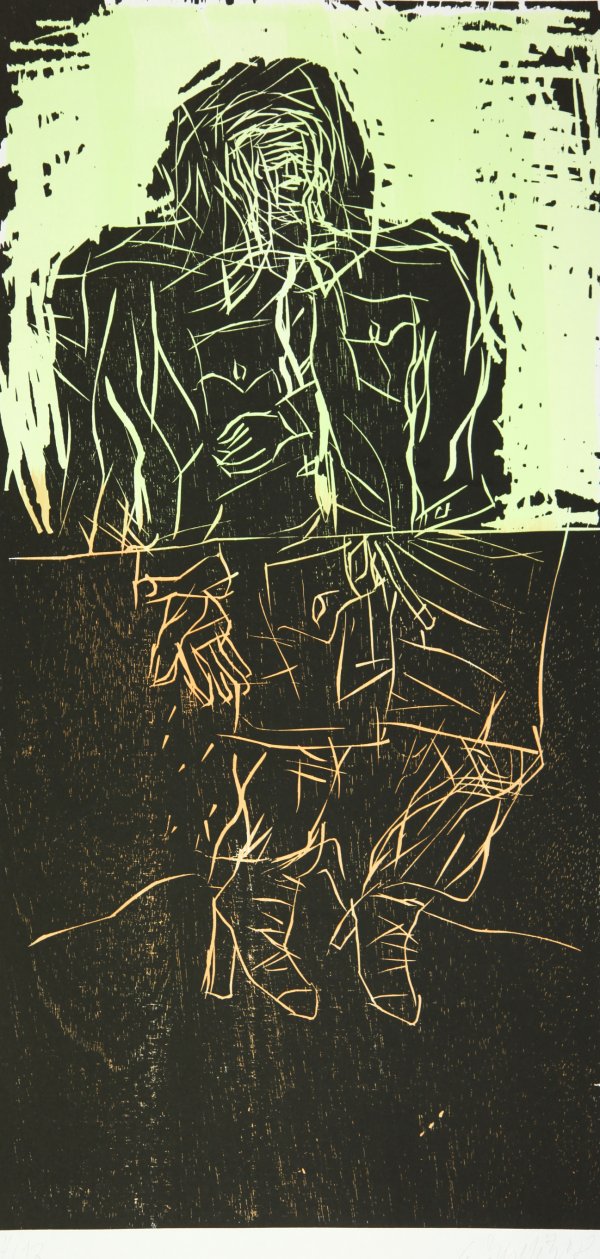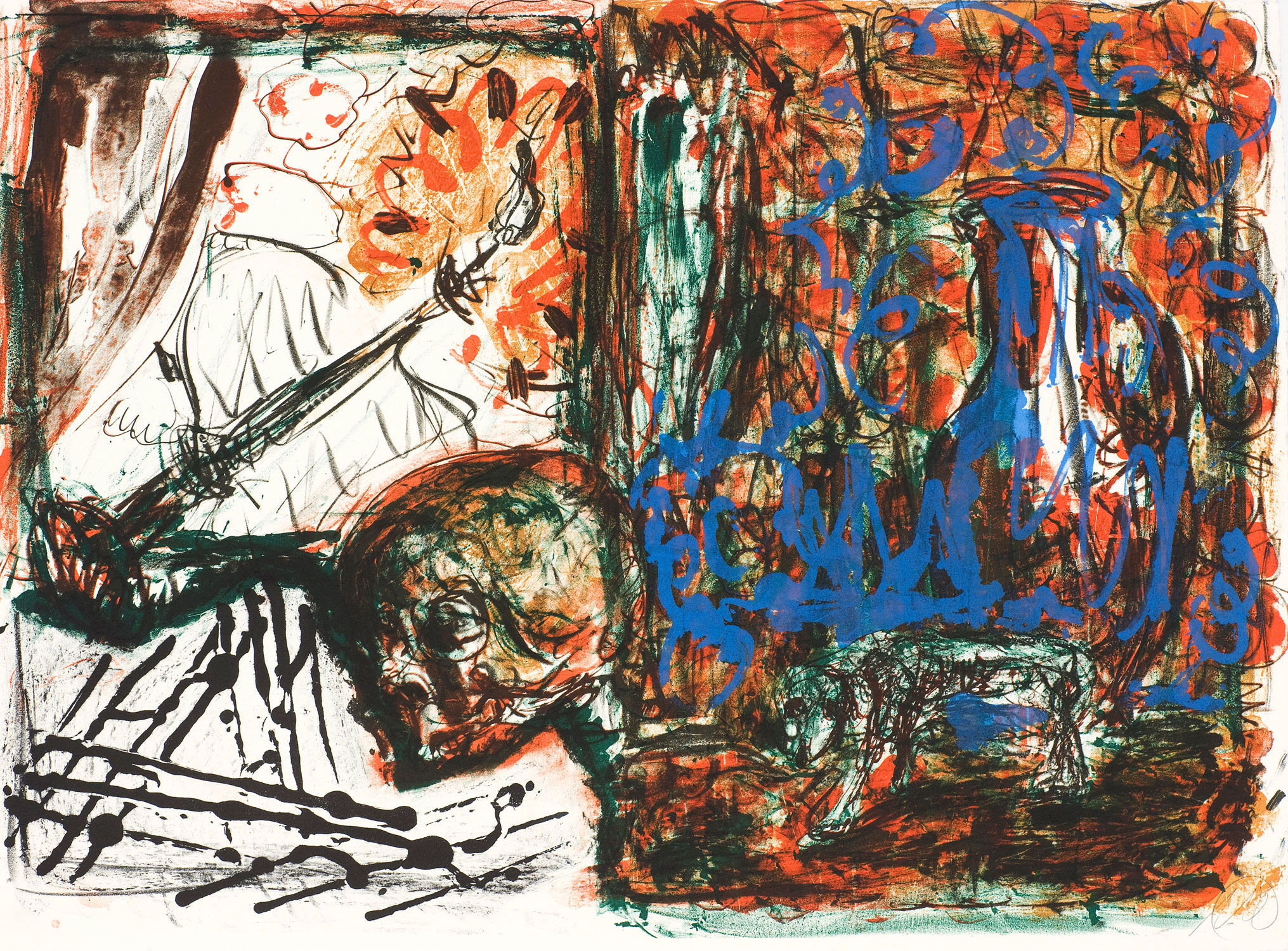What is Neo-Expressionism?
Neo-expressionism is a style of late modernist or early-postmodern developed as a reaction against conceptual art and minimal art of the 1970s. Neo-expressionists returned to portraying recognisable objects, such as the human body, in a rough and violently emotional way, often using vivid colours. Neo-expressionism dominated the art market until the mid-1980s.

It was overtly inspired by German Expressionist painters, such as Emil Nolde, Max Beckmann, George Grosz, Ernst Ludwig Kirchner, James Ensor and Edvard Munch, and aslo related to American Lyrical Abstraction painting of the 1960s and 1970s.
Early proponents of Neo-Expressionism included Georg Baselitz who was at the head of a loose-knit group of German artists known as Neue Wilden (the ‘New Fauves’) – Anselm Kiefer, Markus Lupertz, Eugen Schonebeck, and A.R. Penck.

Because the work of the Neo-Expressionist artists was so closely linked to buying, selling, and the commercial system of art with its galleries, critics, and media hype, some in the field began to question its authenticity as art that was as purely motivated as was, for example, that of the Abstract Expressionists. Thus its popularity was also the seed of its demise.
Since Neo-Expressionism accepted and rejuvenated historical and mythological imagery, as opposed to the modernists’ tendency to reject storytelling, some scholars believe that Neo-Expressionism played an important role in the transition from modernism to postmodernism.

Expressive art was also experiencing a surge of popularity in the United States of America. Philip Guston is seen as a precursor to the style, who rejected an abstract style of painting in favour of roughly executed figurative subject matter loaded with political content. Much like Pop artists of the 1960s, American Neo Expressionists found ways of incorporating imagery that reflected American society, such as Julian Schnabel, who straddled the boundaries between painting and sculpture by incorporating found objects onto his canvases as diverse as rugs, wood and broken plates.
Neo-Expressionist Art
Browse artworks by Neo-Expressionists here.
